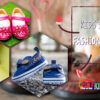
Why Are Children’s Pajamas Tight or Loose? A Complete Guide
Why are children’s pajamas tight or loose? Tight pajamas are safer for fire prevention and warmth, while loose pajamas offer better airflow and comfort. The best choice depends on age, climate, and safety standards—snug fits for infants and winter, loose fits (if flame-resistant) for active kids and summer.
Table of Contents
Kids love nothing more than sleeping in their favorite pajamas. Kids love all pajamas, whether they’re superheroes or ones with their favorite animals. Children’s pajamas can be tight or loose depending on the materials they are made with and their sizes. Knowing both the good and the bad will help you pick the right one for your kids every time.
I will discuss the pros and cons of tight or loose children’s pajamas and how you can pick the right one for your little one. After years of buying the right ones, I also know which brands you should choose so that you can save time and money on your frequent purchases.
Understanding Children’s Pajama Fit

Because every child is different, pajama brands do their best to cover all their bases. While that might be good, it makes finding the right fit for your kids very difficult. So what determines pajama fit for kids, and are there safety issues parents need to know before buying them? Let’s see!
What Determines Pajama Fit for Kids?
First of all, the right-fitting clothes for any kid will be determined by their size and age. Older kids are bigger, duh, so they will need larger-sized pajamas, which tend to be a bit tighter. On the other hand, smaller, younger kids’ pajamas are more geared towards comfort, so those tend to be a bit looser. However, this is interchangeable depending on clothing material and brands.
Pajamas made with materials such as cotton and wool are more comfortable because they are looser around the hips and legs. However, cheaper materials such as bamboo and polyester are tighter because of their features.
Seasonal pajamas will be different in fit because they are made to deal with seasonal weather. For example, winter pajamas are a tight fit because kids get cold quickly, so they need to trap heat more easily. But summer pajamas, being looser, allow for more breathability and comfort.
There are certain pjs that are made according to how your kids sleep. Active sleepers move around a lot so their pjs are made to be looser for easier movements. And kids that get cold more easily or don’t move around too much have pjs that are snugger.
Safety Standards for Children’s Pajamas
CPSC enforces strict flammability rules, and the Flammable Fabrics Act (FFA) has listed certain guidelines that ensure that children’s pajamas are non-flammable to prevent injuries in a fire.
Looser pajamas are made with chemical treatment that ensures they are resistant, but they are non-sustainable. Tighter pajamas tend to be untreated, but they are also less likely to cause flame injuries by reducing the chances of air exposure.
Depending on how safe you want your kids to be, you will need to decide between the two. I suggest you pick between the two once you have narrowed your choice with the help of my how-to-choose guide.
Pros and Cons of Tight-Fit Pajamas for Kids
So you know why kids’ pajamas are tight or loose, but which one should you pick? To make it easier to decide, let’s first go over the pros and cons of tight-fit pajamas for kids. These pros and cons are ones I have found from buying them for my kids.
Benefits of Tight-Fit Pajamas
Better Safety
I have found one unique reason for going with tighter pajamas: They provide more protection during fires. They are less likely to catch on fire because they limit oxygen flow around the skin. The tighter fit allows for less air flow, which lowers the chances of a fire breaking out.
Better Warmth Retention
The same reason that lowers the chances of your kids’ tight pajamas catching on fire also makes them the right choice during the cold season. Less airflow means less cold air flowing around your kids’ legs. Also, the tight fit ensures the warm air around your kid’s body won’t be able to flow out easily. This boosts the heat retention around your kids quite a bit and keeps them warm longer, even in cold weather.
Reduced Chances of Tripping
Tighter pajamas are made with less fabric, so there won’t be too much fabric pooling around your kid’s feet. This greatly lowers the chances of your kid tripping and getting tangled up. As a parent, my kids tripping is one of my biggest fears, and I have found that often, the reason is excess fabrics falling under my kids’ feet.
Ideal for Infants and Toddlers
Due to their snug, swaddle-like fit, tight pajamas are ideal for both infants and toddlers. The swaddle-like fit will help young kids feel more at ease and sleep better, while the snugness will ensure they don’t move around too much and sleep comfortably.
Drawbacks of Tight-Fit Pajamas
May Feel Restrictive
While feeling snug is helpful for better sleep and comfort for infants and toddlers, some might find it too restrictive. This restriction might even keep them up at night and ensure they have less sleep. As a parent, I know just how cranky my kids become when they don’t get their minimum hours of sleep. Kids who tend to move around a lot while sleeping are the ones who feel tight pajamas restrictive.
Less Breathable
Tight children’s pajamas are made with materials that limit breathability. The less air flow causes kids to feel hot around their legs, which can make them quite uncomfortable. I highly don’t recommend them for kids during the summer months. Summer months are hot enough on their own; you don’t want your kids to feel even hotter due to tight pajamas.
Harder to Layer
It might not make sense to you, but tight pajamas are hard to layer during cold months. The tightness limits what your kids can wear over or underneath them, so I recommend looser pajamas if you need to layer.
Best Fabrics for Tight Pajamas
While I can’t share which brands are the best if you are looking for tight pajamas since most brands make them. But I can share which materials are the best. Let’s go over your choices:
- Cotton-spandex blend: The blend offers stretchiness and breathability even when it is tight-fitting. But without careful washing, you might find these pjs shrinking on you.
- Polyester: A common choice that offers durability and share retention even with harsh machine washing. However, they tend to be less breathable, so they should be worn only during colder months.
- Bamboo viscose is a more sustainable choice with hypoallergenic, moisture-wicking, perfect for infants and younger toddlers. But these features also make the pjs more expensive.
- Merino wool: A very natural choice that has a naturally temperature-regulating property. They will feel itchy in the beginning for your kids, and they are expensive as well.
Related: How to Choose Christmas Pajamas for Kids? Easy & Smart Guide
Pros and Cons of Loose-Fit Pajamas for Kids

Like before, you know why children’s pajamas are are tight or loose, but now let’s go over why you might or might not want to buy loose-fit pjs for your kids. Again these are pros and cons I have found by having my kids wear looser pjs.
Benefits of Loose-Fit Pajamas
More Freedom of Movement
The simple reason for picking loose pajamas for kids or adults is that they are looser. This means more comfort thanks to more freedom of movement. Looser pajamas come with both elastic hip and stretchy fabrics, which will allow your kids to move around more easily.
Better Airflow in Warm Weather
The looseness of these pajamas ensures more airflow, unlike the tight ones. Greater airflow means your kids will feel cooler during hot summer. The chance of your kids overheating during those times will be reduced if they wear loose pjs while playing or at home.
Easier to Layer
Unlike tight pjs, looser ones are easier to layer. Their stretchiness ensures kids can wear more layers over or under them more easily. Parents will be able to mix and match the layers more easily with looser pjs. I suggest having your kids wear thermals under the pajamas because they will retain more heat while allowing them to move around easily.
Comfort-First Option
Some kids have sensitive skin or just aren’t comfortable with tight-fitting clothes, so looser pajamas are the better choice. They provide a more relaxed feel, so parents should choose them over the tighter choices.
Drawbacks of Loose-Fit Pajamas
Higher Fire Risk (Unless Treated)
Because of the materials used to make looser pajamas, they are more at risk of getting caught on fire. No-name brands are famous for cutting corners to make their clothes cheaper, and these are the ones more likely to be a health hazard. I suggest picking looser pajamas made by known brands, as they will treat their fabrics to be flame-resistant as per the Flammable Fabrics Act (FFA).
Potential Tangling Hazard
Being looser means using more fabric, and over time, pajamas that are loose will stretch. The excess fabric will pool around the leg and be a tripping hazard for infants and toddlers. Parents need to keep their eyes on the pajamas and either sew or cut up the excess fabric.
Less Insulating in Cold Weather
Any loose clothing won’t be effective during cold weather, whether it’s for kids or adults. The looseness makes cold air flow more easily around the body and sucks the heat out. Unless you layer up your kid, I won’t recommend they wear their loose pajamas during the winter.
Best Fabrics for Loose Pajamas
Like tight pajamas, certain fabrics work better as loose pajamas. Here are some I know that work well. Let’s go over the:
- 100% cotton: This material is known for being super breathable and soft to the touch, ideal for kids with sensitive skin. But cotton pjs do wrinkle quite easily and must be washed carefully.
- Flame-resistant polyester: Since the polyester is treated, it is flame-resistant and stretches more. But the chemicals do make it less eco-friendly, and your kids might be allergic to some of them, so be careful.
- Bamboo-cotton blend: This blend has the pros of both materials, meaning it’s both cooling and hypoallergenic. But the blend also makes the pjs cost more.
- Organic fleece: A great choice even during the colder months because the material makes the pjs warmer and cozier with its excess bulk. But the bulk might turn off some kids and or parents.
How to Choose the Right Pajama Fit for Your Child
Knowing why children’s pajamas are tight or loose won’t help you choose the right one unless you also consider other factors. What are those factors? Here they are:
Age and Developmental Stage Considerations
We all know that every child develops in their own way, both physically and mentally. So, parents will need to consider their kid’s own unique physical growth to decide whether they should wear tight or loose pajamas. Here are some things I have learned to help you make the decision a bit easier.
- Newborns (0-12 months): Babies at this age need to feel more secure and comfortable to ensure they sleep better. As such, tight pajamas are ideal because snug-fitting will ensure their movements are restricted, and they feel safe.
- Toddlers (1-3 years): Toddlers can go either with snug or loose-fit depending on their comfort choice and how much they move about while being active or sleeping.
- Preschoolers (3-5 years): These kids are active quite a lot, and they will require more flexibility, so loose-fit pajamas are the ideal choice, but keep in mind their preferences as well.
- School-age (6+ years): At this age, kids are quite adapting to choosing what they want to wear. Let them choose to teach about responsibility and to help them be more independent.
Seasonal and Climate Factors
The kind of weather you are experiencing is a bigger factor than why children’s pajamas are tight or loose. The weather or the condition outside will factor into which kinds of clothes you and your kids should be wearing.
For example, during cold months and snowing conditions, it is recommended that you go with looser pajamas so that you can layer on other clothes. But during cooler weather, tight pajamas should be more than enough for your kids. However, if your child does get cold more easily, layer clothes for extra heat retention.
Looser pajamas are also recommended during summer months because they are breathable. Tight pajamas only limit air flow and increase the chances of overheating, which is bad. Parents should watch their kids closely to ensure that doesn’t happen.
Fabric Choices and Their Impact on Fit
Depending on your kid’s needs, you don’t need to consider why your children’s pajamas are tight or loose because that need is more important. So, let’s go over some of the more common needs kids have:
- Hypoallergenic: For kids with allergy issues, you need to ensure they wear PJSs made from organic cotton and/or bamboo. The fit isn’t important because they can be worn either.
- Warmth: Kids that get cold more easily are like something that’s snug, so I suggest tight pjs. These work great at keeping the heat inside and cold air outside.
- Breathability: Some kids, like mine, tend to sweat more easily, so they need clothes that are more breathable. Loose pjs allow for more air circulation, so I go for that.
- Eczema-friendly: Kids, when they are young, have more sensitive skin, so they need pjs that are eczema-friendly, and the tight ones are ideal for them because they reduce skin irritation.
Best Brands for Tight and Loose Children’s Pajamas

Remember what I said? I can’t tell you which brands are best for kids who like tight or loose pajamas. Well, I kind of lied, but not really. It’s true that most brands have both tight and loose pajamas for children, but some brands do one better than others. So here are some suggestions to make your next pajama-buying session easier.
Best Tight-Fit Pajamas
- Hanna Andersson: They have some amazing organic cotton pjs that are durable and snug.
- Burt’s Bees Baby: This is it if you are looking for eco-friendly, ultra-soft options for tight pjs.
- Carter’s: This brand is known for their affordable yet stretchy cotton PJs that will last through growth spurts.
Best Loose-Fit Pajamas
- Primary: Their pjs are flame-resistant with bold colors and super comfortable.
- Gap Kids: A well-known brand that makes breathable pajamas for children that’s also light on the wallet.
- PajamaGram is a solid choice for cozy fleece options and is great for winter lounging.
Parental Tips for Buying and Maintaining Pajamas
Regardless of why their children’s pajamas are tight or loose, parents need to know how to pick and maintain the right ones for their kids. Here are some tips I have learned or found to help with just that:
- Check the fit regularly: Kids grow fast when they are young, so don’t have them wear the same ones for too long. Instead, check the pajamas regularly to avoid red marks or loose fabrics.
- Follow washing instructions: To ensure the pajamas last long, wash them according to their instructions.
- Rotate multiple pairs: Pajamas should also be rotated frequently to ensure they are over-worn and have extended fabric life.
- Inspect for wear & tear: Check the pajamas for any wear and tear and fix them quickly.
Frequently Asked Questions (FAQs)
Are tight pajamas safer than loose ones?
Tight pajamas reduce fire risks by fitting closely to the body. Loose pajamas must be flame-resistant to meet safety standards. Both options can be safe when chosen correctly.
Can my child wear regular clothes like pajamas?
Regular clothes aren’t held to the same flammability standards as sleepwear. For maximum safety, always choose pajamas specifically designed for sleeping.
How do I know if pajamas are too tight or too loose?
Look for red marks (too tight) or excess fabric that could tangle (too loose). The best fit allows free movement without restriction.
Do all children’s pajamas have to be flame-resistant?
Organic cotton and bamboo are ideal – they’re naturally hypoallergenic and breathable. Avoid synthetic fabrics if your child has skin sensitivities.
Conclusion
Knowing why children’s pajamas are tight or loose can help you pick the right ones when you are out shopping. They can be tight or loose depending on the materials, the person they are made for, the brands, and more. Each type has its own pros and cons, so parents need to ensure they aren’t buying the wrong ones.
To pick the right one, parents need to consider their children’s age and size, the season they are in, their children’s needs, and any special considerations the children have. Hopefully, my suggestions and tips have helped you find one that will keep your children comfortable and without restrictions.






